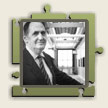Synthetic Sugar Lesson Plans
This lesson plan uses the attitude objectives stated in the Alberta Program of Studies for Elementary Science. It is intended to encourage students to develop the following attitudes towards scientific study:
Demonstrate positive attitudes for the study of science and for the application of science in responsible ways.
Specific Learner Expectations
Students will show growth in acquiring and applying the following traits:
- curiosity
- confidence in personal ability to learn and develop problem-solving skills
- inventiveness and open-mindednes
- perseverance in the search for understandings and for solutions to problems
- flexibility in considering new ideas
- critical-mindedness in examining evidence and determining what the evidence means
- a willingness to use evidence as the basis for their conclusions and actions
- a willingness to work with others in shared activities and in sharing of experiences
- appreciation of the benefits gained from shared effort and cooperation
- a sense of personal and shared responsibility for actions taken
- respect for living things and environments, and commitment for their care.
Teachers are encouraged to use these lesson plans as a springboard for studying specific topics in Elementary Science
LESSON 1
Who was Sugar Ray?

This lesson plan introduces students to the work of Dr. Raymond Lemieux of the University of Alberta.
Synthetic sugar was the life’s work of Dr. Lemieux of the University of Alberta, who researched carbohydrates.
In 1953, he and another researcher became the first scientists in the world to synthesize sucrose—ordinary sugar. This was considered an important development because the three-dimensional structure of sugar is crucial, and Lemieux and his colleague had discovered a technique that enabled them to reproduce the molecules in perfect 3-D configurations. Later, Lemieux would be the first to synthesize oligosaccarides, a sugar that coats red blood cells, marking an important step in the study of immunology.
Over the years, Dr. Lemieux became known by the nickname “Sugar Ray,” for his work. At the U of A, he became a professor and chairman of the division of organic chemistry. Dr. Lemieux’s autobiography, Explorations with Sugars: How Sweet It Was, was published in 1990, and is still in print. Sugar Ray died in 2000, and was the recipient of many national and international honours.
Lesson 1—Activity 1
Have students read selections from Dr. Lemieux’s autobiography, and have them explain why he was such a dominant figure in world research on carbohydrates.
LESSON 2
What is synthetic sugar?
The attempts to synthesize sugar—common table sugar—thwarted chemists for a century before Dr. Raymond Lemieux was to discover the secret in 1953.
His ongoing research over forty years revealed how carbohydrates could bind to proteins, a development important to study in such medical areas as cancer, immunology, organ transplants, leukemia and hemophilia. All of this emerged from what was essentially an early and comparatively minor discovery for Lemieux, when one considers the later benefits in chemistry and medical science.
Lesson 2—Activity 1
Provide examples of processed or artificial sweeteners such as sucralose, aspartame or sorbitol, and allow the students to view, taste and smell these varieties. What are the differences in appearance and flavour between these sweeteners?
Lesson 2—Activity 2
Discuss with the students the uses of such artificial sugars. What are the benefits and detriments of using these sweeteners? Have available a selection of products in which these sweeteners are used, as well as examples of the equivalent conventionally sweetened products. Discuss how the flavours differ.
LESSON 3
What are the traditional sources of sugar?
This lesson plan will show students the abundance of natural and artificial sugar sources beyond sugar cane.
The most obvious source of granulated or table sugar has been sugar cane, which grows in tropical climates. However, other sources of sugar and syrup have been derived from such sources as the honey bee, the sugar maple, sugar beets, pomegranates, the silver birch, and corn.
Science has devised other sweeteners—called artificial because they have no naturally growing source—such as sorbitol, aspartame and sucralose. These are available as sweetening agents (in the form of powder, tablets, liquids), or in products sweetened with these agents.
Lesson 3—Activity 1
Allow students to taste and smell naturally occurring sources of sugar. Have available to them sugar cane, sugar beets, honey, corn syrup, maple syrup, birch syrup, and pomegranate molasses. Also have available examples of processed or artificial sweeteners such as sucralose, aspartame or sorbitol. What are the differences in appearance and flavour between the categories, and the varieties within the categories?
Lesson 3—Activity 2
Alberta is known as a highly regarded producer of honey. Arrange a field trip to a beekeeper or a honey processing plant
Lesson 3—Activity 3
Is it possible to build an apiary in the school yard or at home? Invite a beekeeper or honey producer to the school to discuss the possibility of a homegrown honey project.
Copyright © 2008 Heritage Community Foundation
All Rights Reserved




